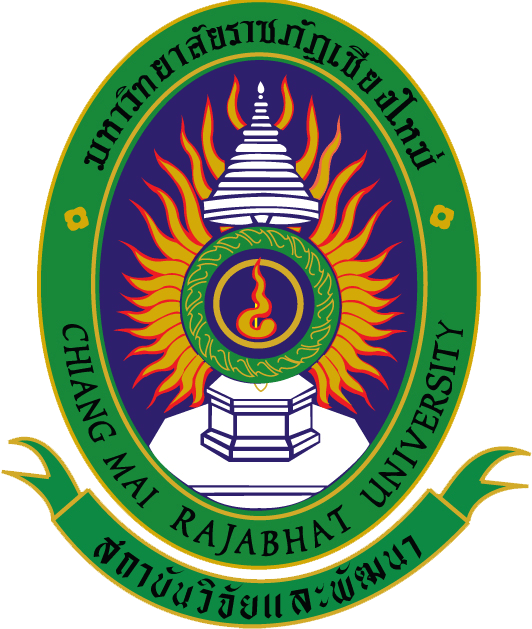
ระบบสารสนเทศงานวิจัย สถาบันวิจัยและพัฒนา มหาวิทยาลัยราชภัฏเชียงใหม่
Research Information System(RIS)
ประสิทธิภาพการผลิตและลักษณะสัณฐานวิทยาของ ไก่แม่ฮ่องสอนช่วงอายุต่างกันเมื่อเทียบกับไก่ประดู่ หางดำ ไก่ไข่เพศผู้ และไก่เนื้อ
ผู้ช่วยศาสตราจารย์ สัตวแพทย์หญิง ดร.กุลิสรา มรุปัณฑ์ธร
คณะเทคโนโลยีการเกษตร
คำสำคัญ :
เลขทะเบียน :
1421-64-AGRI-TSRI
บทคัดย่อ
การศึกษาประสิทธิภาพการผลิตและลักษณะสัณฐานวิทยาของไก่แม่ฮ่องสอนช่วงอายุต่างกันเมื่อเทียบกับไก่ประดู่หางดำ ไก่ไข่เพศผู้ และไก่เนื้อ วางแผนการทดลองแบบสุ่มสมบูรณ์ โดยใช้ไก่แม่ฮ่องสอนคละเพศ ไก่ประดู่หางดำคละเพศ ไก่ไข่เพศผู้ และไก่เนื้อคละเพศ อายุ 1 วัน ชนิดละ 150 ตัว รวม 600 ตัว แบ่งการทดลองเป็น 4 กลุ่มตามชนิดของไก่ กลุ่มละ 10 ซ้ำ ซ้ำละ 15 ตัว โดยไก่แต่ละกลุ่มได้รับอาหารเหมือนกัน ทดลองได้รับน้ำและอาหารเต็มที่ (ad libitum) เก็บข้อมูลน้ำหนักตัว และปริมาณการกินได้ ที่อายุ 1 วัน - 5 สัปดาห์ในไก่เนื้อ และอายุ 1 วันถึง 16 สัปดาห์ในไก่แม่ฮ่องสอน ไก่ประดู่หางดำ และไก่ไข่เพศผู้ ทำการวัดสัณฐานวิทยาของไก่ทดลอง วัดและบันทึกลักษณะทางสัณฐานวิทยา โดยวัดแยกเพศในไก่แม่ฮ่องสอน ไก่ประดู่หางดำ และไก่เนื้อ เพศละ 3 ตัวต่อซ้ำ รวมซ้ำละ 6 ตัว วัดเมื่ออายุ 5 - 8 สัปดาห์ 12 สัปดาห์ และ 16 สัปดาห์ และเก็บข้อมูลความถี่การขันในช่วงวันของไก่แม่ฮ่องสอน เมื่ออายุ 16 สัปดาห์ โดยสุ่มไก่แม่ฮ่องสอนเพศผู้ทุกกลุ่ม กลุ่มละ 3 ตัว รวม 30 ตัว เก็บข้อมูลในเดือนสิงหาคม เป็นเวลา 24 ชั่วโมงเพื่อหาความสัมพันธ์ของสัณฐานวิทยากับความสามารถในการขัน ผลการทดลองพบว่าเมื่อสิ้นสุดการทดลองไก่เนื้อมีน้ำหนักตัวที่เพิ่มขึ้นเฉลี่ยต่อวัน (32.53±2.10กรัม) มากกว่าไก่ประดู่หางดำ (17.76±0.70 กรัม)ไก่ไข่เพศผู้ (9.79±0.63กรัม) และไก่แม่ฮ่องสอน (8.52±0.39กรัม) อย่างมีนัยสำคัญทางสถิติที่ P<0.001 ไก่เนื้ออายุ 5 สัปดาห์มีอัตราการเจริญเติบโตเฉลี่ยสูงที่สุด รองลงมาคือไก่ประดู่หางดำ ไก่ไข่เพศผู้ และไก่แม่ฮ่องสอน (P<0.001) เมื่ออายุ 16 สัปดาห์ไก่ประดู่หางดำมีอัตราการเจริญเติบโตเฉลี่ยไม่แตกต่างกับไก่แม่ฮ่องสอน แต่สูงกว่าไก่ไข่เพศผู้ (P<0.001) ไก่เนื้อช่วงอายุ 0-5 สัปดาห์กินอาหารมากกว่าไก่ประดู่หางดำ ไก่ไข่เพศผู้ และไก่แม่ฮ่องสอน (804.49±34.61, 671.24±41.31, 500.17±14.13 และ 373.59±9.06 ตามลำดับ) (P<0.001) แต่อัตราการเปลี่ยนอาหารของไก่เนื้ออายุ 0-5 สัปดาห์ (0.73±0.05) ดีกว่าไก่ประดู่หางดำ ไก่ไข่เพศผู้ และไก่แม่ฮ่องสอน (2.16±0.08, 2.12±0.24 และ2.18±0.19 ตามลำดับ) (P<0.001) ไก่แม่ฮ่องสอนอายุ 0-16 สัปดาห์มีอัตราการเปลี่ยนอาหารไม่แตกต่างกับไก่ไข่เพศผู้ แต่แย่กว่าไก่ประดู่หางดำ (P<0.001) จากการศึกษาสัณฐานวิทยาพบว่าไก่แม่ฮ่องสอนเพศเมียอายุ 5 และ 16 สัปดาห์มีความสูงจากเท้าถึงปลายหงอน และความกว้างลำตัวน้อยที่สุด (P<0.001) ผลการศึกษาความสัมพันธ์ของสัณฐานวิทยา กับความถี่ในการขัน พบว่าไก่แม่ฮ่องสอนเพศผู้ที่มีจำนวนครั้งในการขันถี่จะมีจำนวนซี่หงอน 6-7 ซี่ แต่มีความยาวของปีกน้อย
Abstract
Comparative analysis of the production efficiency and morphology of Maehongson chickens at various ages versus Praduhangdum, Laying male and broiler. Completely randomized design (CRD) experiments were devised using one-day-old Maehongson chickens of mixed sexes, Laying male, and mixed-sex broiler, 150 of each type for a total of 600. According to the type of chickens, the experiment was divided into four groups, with each group containing 10 replications and 15 repetitions. Each group of chickens was fed the same diet. The experiment was supplied with ample water and food (ad libitum). The body weight and feed intake of broilers aged 1 day to 5 weeks and Maehongson chickens aged 1 day to 16 weeks, Praduhangdum, and broiler were recorded. The experimental chickens' morphology was measured. Measure and document the morphological characteristics of Maehongson chickens by gender segregated. Praduhangdum and broiler at 5-8 weeks, 12 weeks, and 16 weeks, 3 per sex were repeated six times for a total of 6 per rep, and data on the crowing frequency of 16-week-old Maehongson chickens was collected. There were three males in each group were sampled, for a total of thirty animals. 24 hours of data were collected in August to determine the relationship between morphology and scrambling ability. At the conclusion of the experiment, the results revealed that broiler had a greater average daily weight gain (32.53±2.10g) than Praduhangdum (17.76±0.70g), laying male (9.79±0.63g), and chicken from Maehongson (8.52±0.39g) with a p-value of less than 0.001. The 5-week-old broiler had the highest average daily gain based on statistical significance (P<0.001), followed by Praduhangdum, Laying male, and Maehongson chickens. At 16 weeks of age, Praduhangdum had average growth rates not different from those of Maehongson chickens (P<0.001), but greater than Laying male (P < 0.001). Broilers aged 0-5 weeks consumed more food than Praduhangdum, laying male, and Maehongson chickens (804.49±34.61, 671.24±41.31, 500.17±14.13 and 373.59±9.06, respectively; P < 0.001), but the feed conversion ratio of 0–5-week-old broilers (0.73±0.05) was favorable to than Praduhangdum, Laying male, and Maehongson chickens (2.16±0.08, 2.12±0.24 and 2.18±0.19, respectively; P<0.001). Maehongson chickens aged 0-16 weeks had the same feed conversion rates as laying males but were inferior to Praduhangdum (P<0.001). According to morphological studies, female Maehongson chickens aged 5 and 16 weeks had the same foot-to-crest height and body width (P<0.001) and frequency of crowing revealed that male Maehongson chickens with higher crowing frequency have the six to seven deep tops of the comb but shorter wings.
ไฟล์งานวิจัย
รายงานวิจัยฉบับสมบูรณ์ประสิทธิภาพการผลิตและลักษณะสัณฐานวิทยาของไก่แม่ฮ่องสอน (ลายน้ำ).pdf
ข้อมูลการตีพิมพ์
ชื่อบทความ :
แหล่งที่ตีพิมพ์ :Poult Sci. 2023 Nov;102(11):103067. doi: 10.1016/j.psj.2023.103067. Epub 2023 Aug 25.
ปีที่ตีพิมพ์ :2566
ข้อมูลการนำไปใช้ประโยชน์
37 07 ต.ค. 2564
สำนักงานคณะกรรมการส่งเสริมวิทยาศาสตร์ วิจัยและนวัตกรรม (สกสว.)
สำนักงานคณะกรรมการส่งเสริมวิทยาศาสตร์ วิจัยและนวัตกรรม (สกสว.) ชั้น 14 อาคาร เอส เอ็ม ทาวเวอร์ 979/17-21 ถนนพหลโยธิน แขวงสามเสนใน เขตพญาไท กรุงเทพฯ 10400
02 278 8200
callcenter@trf.or.th, webmaster@trf.or.th